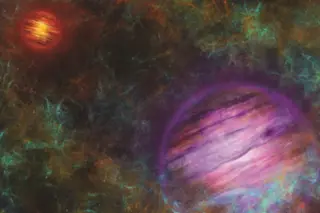(Inside Science) — Pluto is not a planet, according to the vast majority of astronomers. While it orbits the Sun and is mostly round, it does not orbit alone, instead traversing the solar system accompanied by several moons, including a companion almost half its size. This is the main reason for its demotion in 2006.
A few holdouts continue to debate this definition, but they may have a new epistemic challenge to contend with: What makes a star? When a distant object is too small and too faint to be a star, but also too big to be an exoplanet, and is not solitary, how can you be sure what it is?
Astronomers recently found a most mystifying example of such in-between objects: a pair of planetlike orbs, some 450 light-years away, that aren’t bound to any host star and travel the void together. They are brown dwarfs, which are ...














